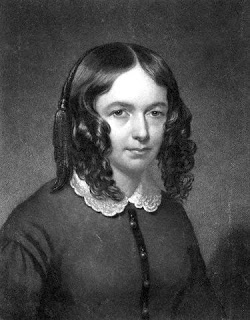How Do I Love Thee? (Sonnet 43)

Elizabeth Barrett Browning
How do I love thee? Let me count the ways.
I love thee to the depth and breadth and height
My soul can reach, when feeling out of sight
For the ends of being and ideal grace.
I love thee to the level of every day's
Most quiet need, by sun and candle-light.
I love thee freely, as men strive for right.
I love thee purely, as they turn from praise.
I love thee with the passion put to use
In my old griefs, and with my childhood's faith.
I love thee with a love I seemed to lose
With my lost saints. I love thee with the breath,
Smiles, tears, of all my life; and, if God choose,
I shall but love thee better after death.
I love thee to the depth and breadth and height
My soul can reach, when feeling out of sight
For the ends of being and ideal grace.
I love thee to the level of every day's
Most quiet need, by sun and candle-light.
I love thee freely, as men strive for right.
I love thee purely, as they turn from praise.
I love thee with the passion put to use
In my old griefs, and with my childhood's faith.
I love thee with a love I seemed to lose
With my lost saints. I love thee with the breath,
Smiles, tears, of all my life; and, if God choose,
I shall but love thee better after death.
A sonnet is a form of a poem that originated in Europe, mainly Italy: the Sicilian poet Giacomo da Lentini is credited with its invention.[1] They commonly contain 14 lines. The term sonnet derives from the Italian word sonetto, meaning "little song". By the thirteenth century, it signified a poem of fourteen lines that follows a strict rhyme scheme and specific structure. Conventions associated with the sonnet have evolved over its history. Writers of sonnets are sometimes called "sonneteers," although the term can be used derisively. One of the best-known sonnet writers is William Shakespeare, who wrote 154 of them (not including those that appear in his plays). A Shakespearean, or English, sonnet consists of 14 lines, each line containing ten syllables and written in iambic pentameter, in which a pattern of an unstressed syllable followed by a stressed syllable is repeated five times. The rhyme scheme in a Shakespearean sonnet is a-b-a-b, c-d-c-d, e-f-e-f, g-g; the last two lines are a rhyming couplet.
http://www.sonnets.org/basicforms.htm
http://www.sonnets.org/basicforms.htm
